Extremely rare gray whale birth captured on camera, possibly for the first time
A lucky group of whale watchers recently watched a gray whale calf being birthed off the coast of California. It could be the first time that this incredible phenomenon has ever been caught on camera.
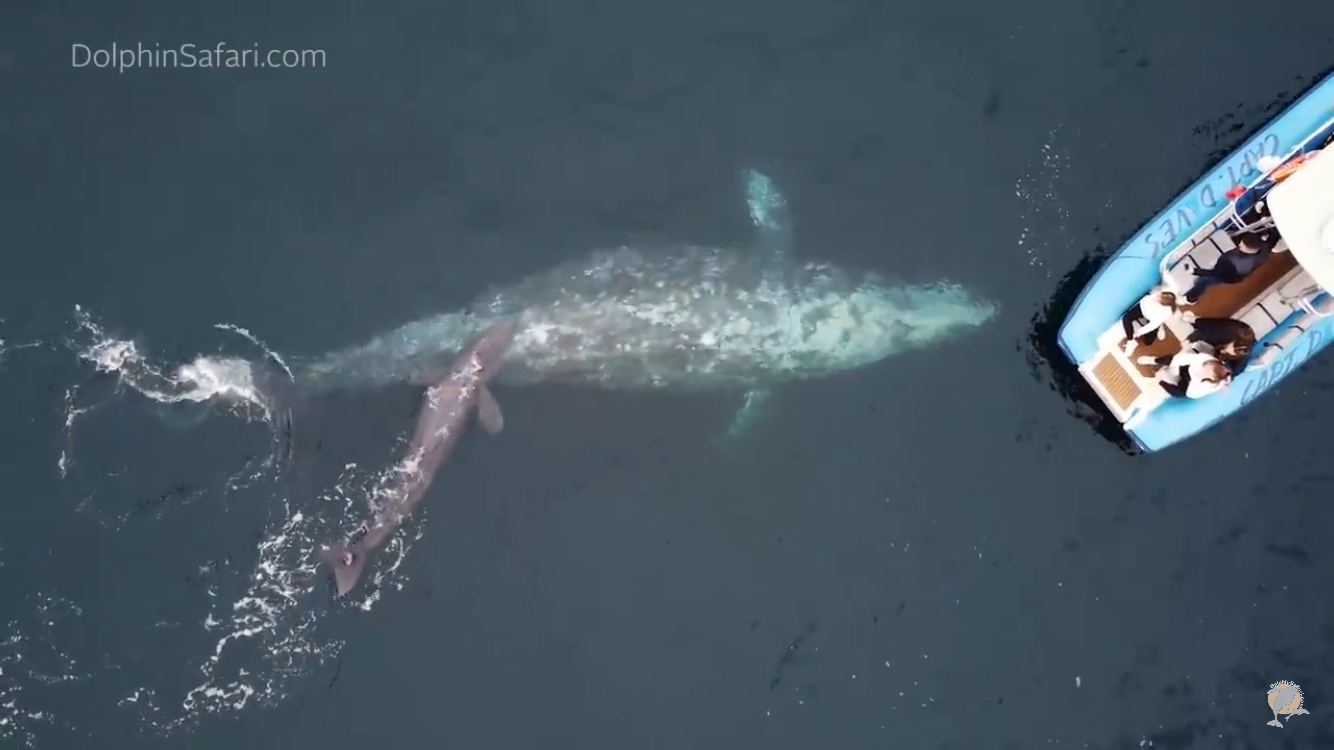
A lucky whale-watching group in Southern California recently got front-row seats to one of the rarest and most miraculous spectacles in nature: the birth of a gray whale calf. A video of the "once-in-a-lifetime sighting" could be the first footage of the species' birth ever recorded, experts suggest.
Passengers on board a multivessel tour organized by Capt. Dave's Dolphin & Whale Watching Safari (DWWS) witnessed the extremely rare phenomenon on Jan. 2 a few miles off the coast of Dana Point in Orange County, DWWS representatives wrote on Facebook. The tour group initially spotted a lone female somewhere between 40 and 50 feet (12 to 15 meters) in length. Shortly afterward, the female began acting sporadically, before a small pool of blood emerged at the surface. The concerned onlookers worried that this was evidence of a shark attack, until a small calf rose to the surface to take its first breath.
A video of the mother and calf pair, which was uploaded to the DWWS YouTube channel, shows the mother swimming alongside her new offspring and occasionally nudging the calf toward the surface or allowing it to rest on her face. The calf, which was around 15 feet (4.5 m) long, was much darker than the mother and appears to have an unusually flexible tail that made swimming difficult.
"It's so floppy," one onlooker exclaimed during the video.
The proud mother was more than happy to show off her vulnerable new calf to the crowded boats. At one point, the pair even swam underneath one of the onlooking vessels, which was raised slightly out of the water by the mother, DWWS representatives wrote on YouTube.
It is a "once-in-a-lifetime sighting," they added.
Related: Whale sighting in Australia hints at 'extremely unusual' interspecies adoption
Sign up for the Live Science daily newsletter now
Get the world’s most fascinating discoveries delivered straight to your inbox.
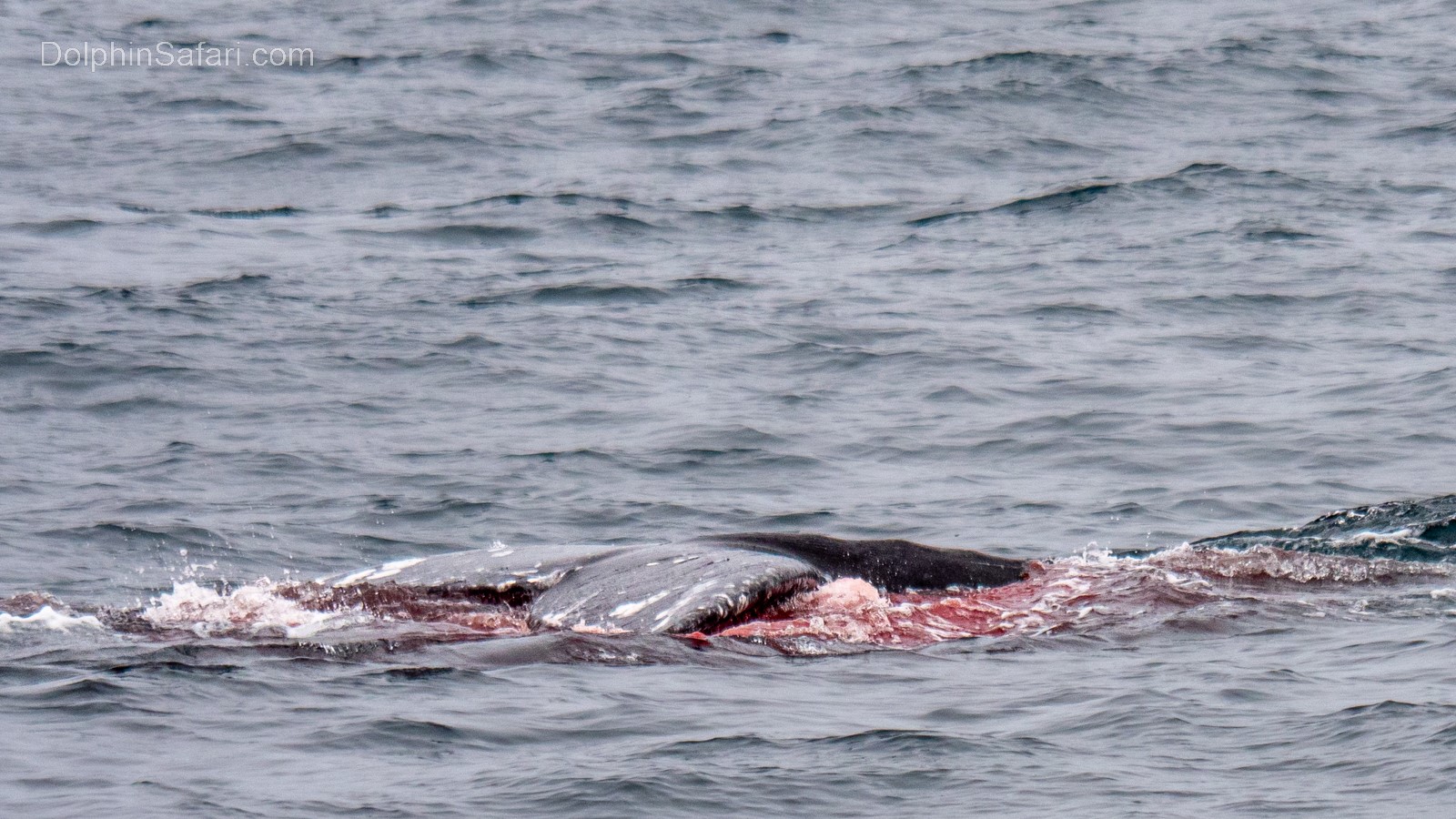
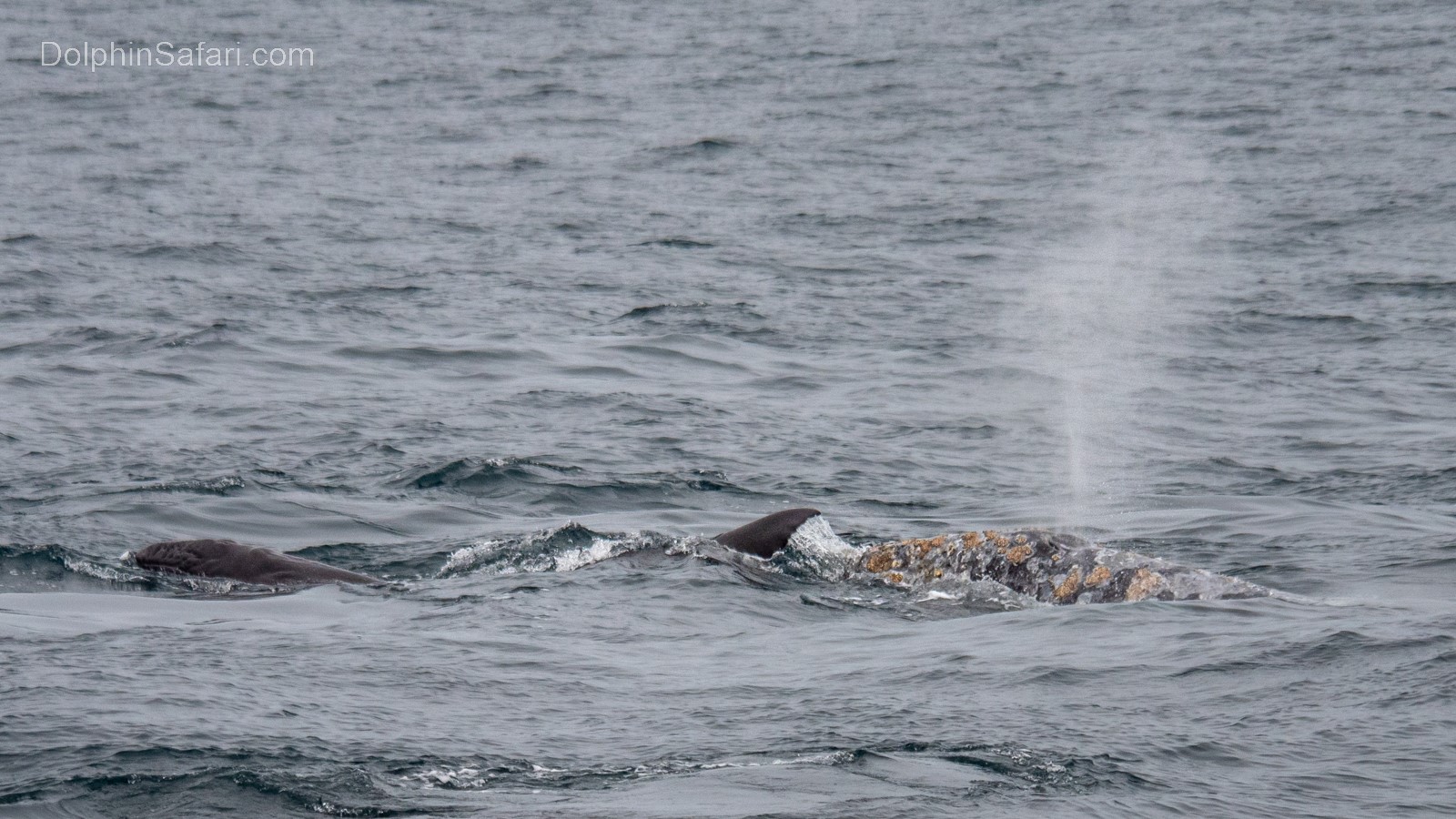
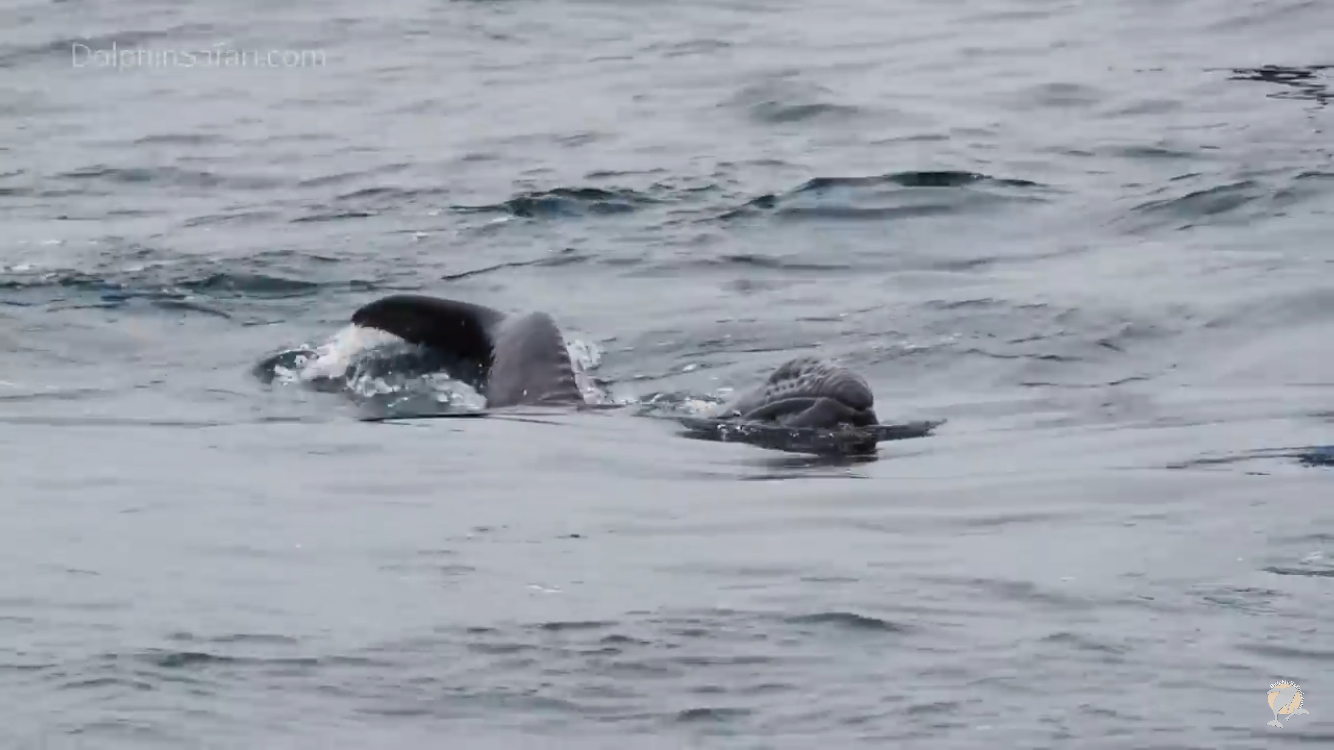
The calf looked "floppy" because gray whales (Eschrichtius robustus) are born with soft flukes, or tails, that take about 24 hours to become rigid, Alisa Schulman-Janiger, a marine biologist with the California Killer Whale Project, told NPR. "The mom is holding the calf up, supporting it so the calf can rest and [is] actually helping it be able to take a breath," added Schulman-Janiger, who also runs the Los Angeles chapter of the American Cetacean Society's Gray Whale Census and Behavior Project.
Schulman-Janiger believes the pair swam close to each other to help establish a strong bond that will be crucial to the calf's survival. Normally, land mammals cement the mother-newborn bond in part by smelling each other, but whales do not have a great sense of smell, she told NPR. However, cetaceans do have "very sensitive" skin that allows them to feel and get to know each other. "That's why there's a lot of tactile contact and touching going on," Schulman-Janiger said.
Gray whales normally prefer to give birth in the lagoons off Baja California, Mexico, which are warmer than the open ocean and provide shelter from predators, such as killer whales. The female was likely migrating south toward Baja California from its colder feeding grounds in the Bering or Chukchi seas near Alaska — a journey of around 5,000 miles (8,000 kilometers), DWWS representatives wrote on YouTube. Because the calf was born so far north, it may have lower odds of survival, but sometimes the calves "just won't wait" any longer if they are fully developed, they added.
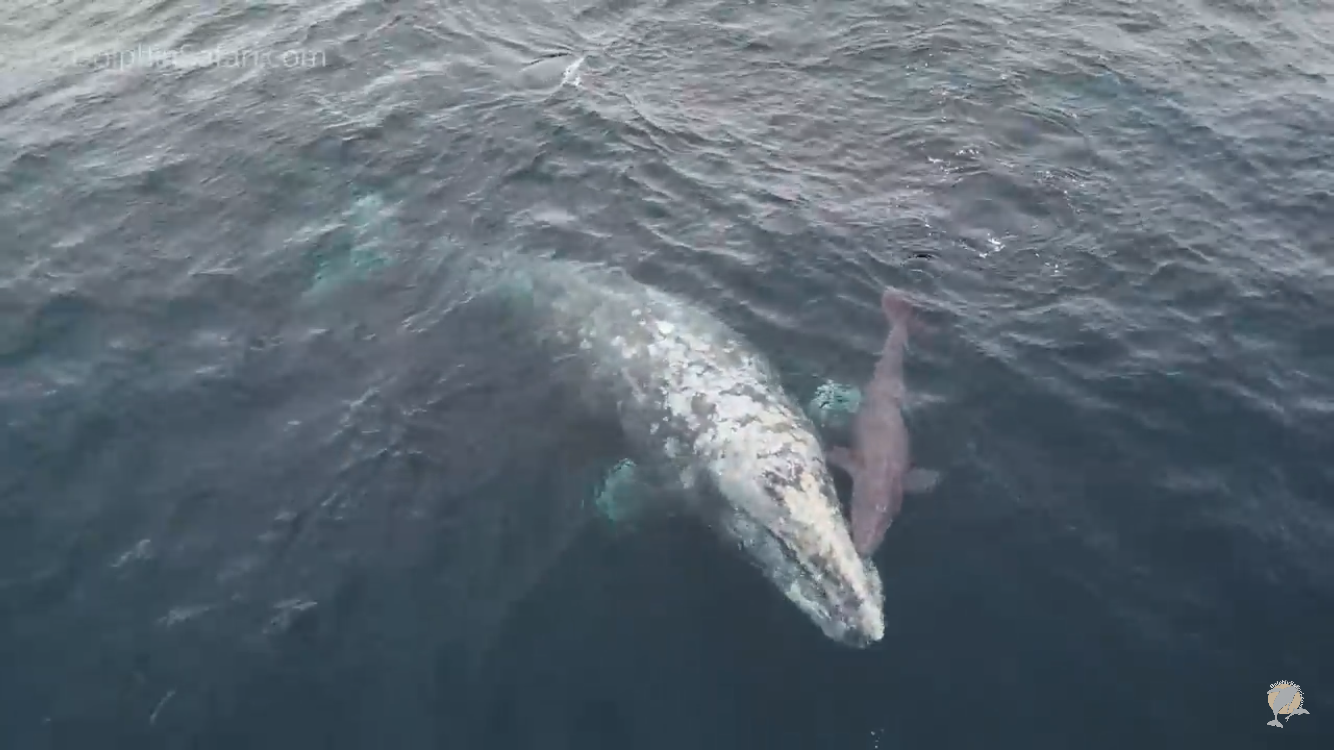
People almost never get the chance to witness gray whale births. The new footage could be the only video evidence of this elusive moment in existence.
"As far as I know, no one has filmed a gray whale giving birth," DWWS owner Dave Anderson told Live Science in an email. Schulman-Janiger agrees that capturing the event on film was extraordinarily lucky.
"The fact that you can see the blood pool means the calf must have just come out," she said. "That isn't something that is seen very often. In fact, I don't know if there's any other video footage of something like that."
The sighting is even more impressive considering that gray whale numbers in the North Pacific are in decline. In 2016, 27,000 individuals swam in the region. But in 2022, the population was estimated to be only 16,650. The decline has resulted, in part, from an "unusual mortality event" that is causing the whales to become stranded on beaches, according to the National Oceanic and Atmospheric Administration.

Harry is a U.K.-based senior staff writer at Live Science. He studied marine biology at the University of Exeter before training to become a journalist. He covers a wide range of topics including space exploration, planetary science, space weather, climate change, animal behavior and paleontology. His recent work on the solar maximum won "best space submission" at the 2024 Aerospace Media Awards and was shortlisted in the "top scoop" category at the NCTJ Awards for Excellence in 2023. He also writes Live Science's weekly Earth from space series.










